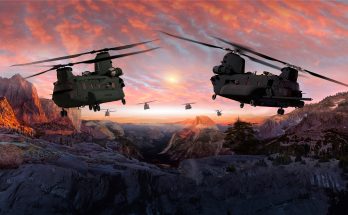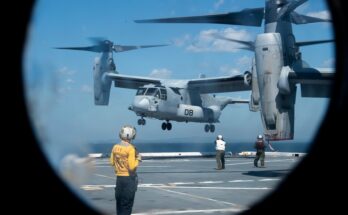by Carter Palmer, Power Systems Specialist, Forecast International.
Helicopters – Unequalled maneuverability; life-saving capability; powerful and indispensable. The helicopter’s value is undisputed and its utility second to none. Companies like Cierva, Breguet, and Sikorski did the pioneering work that resulted in the helicopters we now depend on. Today, the V-22 and AW609 are revolutionizing the field with their tilt-rotor technology, while utilizing capabilities that would astound those early developers.
Nearly all helicopters now in use and a high percentage of older designs have an important component in common: All use turboshaft engines. And in the long list of aviation pioneers, one name should be remembered and honored as the founding father of the turboshaft engine – Joseph Szydlowski.
Founder of Turbomeca – now Safran Helicopter Engines – Szydlowski designed engines that have been powering helicopters of all shapes and sizes – from Russia to Japan, the United States to Europe – for years. Among current applications alone, the number of platforms which utilize Safran engines is impressive. The Forecast International database counts over 20 different rotorcraft and variants currently in production that utilize Safran engines.
Szydlowski founded that first Turbomeca factory in 1938, moving to various locations in France before finally settling in now-Safran’s current location in Bordes.[i] Szydlowski’s expertise lent itself well to the emerging post-war turbine field. Turbomeca went on to produce engines for all types of applications, but it was and is in the field of powering helicopters that the company came to excel. Safran has a long legacy of popular and reliable rotorcraft powerplants.
Named after mountains in Szydlowski’s beloved Pyrenees, Safran offers myriad types and variants of rotorcraft engines, both military and civil. By far the most ubiquitous is the Arriel line of turboshafts. Accounting for nearly 60 percent of past turboshaft production and about 47 percent of future production, the Safran Arriel currently powers mainly Airbus Helicopters and Airbus Helicopters-derived rotorcraft.
However, despite the Arriel being Safran’s dominant model on the production line, the company’s other products may prove to have a wider reach. Several of these can truly claim to span the globe. The new Arrano is slated to power the Airbus Helicopter’s H160. India’s military Dhruv helicopter is powered by Safran’s Ardiden engine; the civilian Dhruv uses Safran’s TM333. The Arrius can be found on the Russian Ka-226 T, the Italian Leaonardo AW109, and the American Bell 505. The Makila, another well-known engine, is the powerplant inside the Airbus Helicopters Super Puma.
In unit production and unit value, Safran hovers above the turboshaft pack.
Forecast International’s fifteen-year forecast (2017-2031) sees Safran Helicopter Engines leading in units produced, with approximately 25 percent of the total turboshaft market. Safran is expected to produce over 10,000 powerplants from 2017 to 2031. As previously noted, the Arriel line will account for about 46 percent of total Safran turboshaft production for the period, with the Arrius coming in at approximately 27 percent, and the Makila at 8.7 percent. Remaining production will be comprised of Safran’s other turboshaft lines: the Ardiden, Arrano, RTM332, and TM333.
When production value is considered, Safran slightly tops its rotorcraft competitors, with about 23.2 percent of the market. (Pratt & Whitney Canada and GE Aviation come in a close 2nd and 3rd, respectively.)
A true global player, Safran Helicopter Engines appears to be headed toward a bright future indeed. Its engines will be powering helicopters of all shapes and sizes for years to come.
Please feel free to use this content with Forecast International and analyst attributions, along with a link to the article. Contact Ray Peterson at +1 (203) 426-0800 or via email at ray.peterson@forecast1.com for additional analysis.
Forecast International produces two distinct Power Systems products. The Aviation Gas Turbine Forecast presents the 15-year outlook for aviation turbofan, turboprop and turboshaft engines and more. The Industrial & Marine Turbine Forecast covers the markets for gas and steam turbines, mechanical drive engines, and marine power, among others.
[i] Safran Helicopter Engines. “Safran, the human and industrial story – Safran Helicopter Engines.” Safran-group.com http://www.safran-group.com/atom/7342
For 50 years, Forecast International intelligence reports have been the aerospace and defense industry standard for accurate research, analysis, and projections. Our experienced analysts compile, evaluate, and present accurate data for decision makers. FI's market research reports offer concise analysis of individual programs and identify market opportunities. Each report includes a program overview, detailed statistics, recent developments and a competitive analysis, culminating in production forecasts spanning 10 or 15 years. Let our market intelligence reports be a key part of reducing uncertainties and mastering your specific market and its growth potential. Find out more at www.forecastinternational.com




